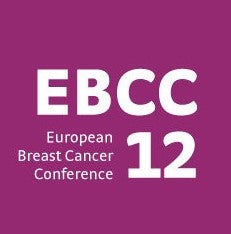Automated analysis of breast cancer patients’ routine scans can predict which women have a greater than one in four risk of going on to develop cardiovascular disease, according to research presented at the 12th European Breast Cancer Conference. Women who have been treated for breast cancer may have a higher risk of developing cardiovascular disease and in some groups the risk of dying from cardiovascular disease is higher than the risk of dying from breast cancer.
This new study shows that it is possible to spot those at the greatest risk using computer analysis of the CT scans that are taken for planning cancer treatments. Researchers say that identifying patients most at risk of cardiovascular disease could allow steps to be taken to lower the risk.
The research was presented by Professor Helena Verkooijen, from the Division of Imaging and Oncology at the University Medical Center Utrecht. Verkooijen: “We’ve seen great improvement in breast cancer survival, thanks in part to better treatment. However, treatments have side effects and some treatments – such as radiotherapy and certain types of cancer drug – can increase the risk of cardiovascular disease. In my opinion, treating breast cancer means finding the right balance between maximising chances of tackling the tumour, while minimising the risks of side effects, including the risk of cardiovascular disease.”
The study included around 14,000 breast cancer patient who were treated with radiotherapy in three large hospitals in The Netherlands between 2005 and 2016.
Professor Verkooijen and her colleagues used a measure called coronary artery calcium (CAC) score. This is a calculation of the amount of calcium in the walls of the heart’s arteries and it is known to be strong risk factor in cardiovascular disease because calcifications can lead to narrowing or blocking of the blood vessels.
The researchers developed a deep learning algorithm that could gauge the presence and extent of coronary artery calcifications from the CT scans that were already being carried out to help plan each woman’s radiotherapy treatment. This allowed them to automate the measurement of CAC for all the women with only minimal extra workload.
Researchers followed the women for an average of 52 months to see whether any of them developed cardiovascular disease. In women with no calcifications (a score of zero), 5% went on to be hospitalised or to die from cardiovascular disease. In women with a score of between one and ten, 8.9% were hospitalised with or died from cardiovascular disease. In women with a score of 11-100, the figure was 13.5%, in women with a score of 101-400 it was 17.5% and in women with a score above 400, it was 28.3%.
When researchers took into account women’s ages and the year they were diagnosed, they found a 3.7 times greater risk of cardiovascular disease in women with the highest score (above 400), compared with women without calcifications. In women who were treated with a particular type of chemotherapy called an anthracycline, the association between high CAC score and cardiovascular risk was even stronger.
The researchers acknowledge that they were unable to take other cardiovascular disease risk factors, such as smoking, high blood pressure and diabetes, into account in this study, although these are factors they are looking at in another study.
Verkooijen: “We believe this is the first time anyone has conducted a study of this scale like this. We’ve shown that we can use routine CT scans to indicate which breast cancer patients are most likely to develop cardiovascular disease. Now we need to do more research to find out what can be done to help minimise this risk, for instance whether patients’ cardiovascular health should be monitored or treated.”
The researchers are now working to get their technique for predicting cardiovascular disease risk into use in several radiotherapy units in The Netherlands. Patients taking part in this study who are found have an increased risk will be offered further cardiovascular screening and lifestyle advice, and their CAC score will be used in planning their breast cancer treatment.
Professor Nadia Harbeck, from the University of Munich (LMU) in Germany, is chair of the 12th European Breast Cancer Conference and was not involved with the research. She said: “Our key aim is treating breast cancer effectively. However, it’s just as important that we don’t over-treat patients because cancer therapies can have serious and long-term side-effects. This is a clever study because it shows us how the CT scans we are already taking can also be used to discover which women have the highest risk of cardiovascular disease. We look forward to further results from these researchers and hope they might show us how best to help women who are at a higher risk of cardiovascular disease.”
This research was funded by the Dutch Cancer Foundation.
EBCC is the largest breast cancer conference outside the USA. It aims to provide a unique multidisciplinary setting for all professionals with a common interest in breast cancer to discuss, debate, inform and educate themselves about this evolving disease. Approximately 2,500 breast cancer stakeholders from about 90 countries will come together to share the most recent scientific knowledge.
